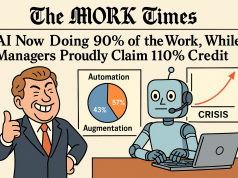[ad_1]
Business leaders around the world have become increasingly aware of the fact that an effective leadership style is more important than ever in the workplace. The wrong leadership style can lead to a lot of problems, including:
- Low motivation
- Poor productivity
- Team disharmony
- High employee turnover
It’s critical that both local employers who need local workers and non-local employers that need online workers provide appealing leadership. Modern workers are not limited to local job markets and income options. Instead, they can now find unlimited income opportunities online and they are not as tied to their geographic location as generations before them. Remote workers can move easily from job-to-job because they have no physical connection to a remote company. A supervisor’s leadership style often influences a remote worker’s loyalty.
There are plenty of leadership styles that you might use in your business. The task-oriented and people-oriented styles are two of the most popular ones:
What Is Task-Oriented Leadership?
A task-oriented leader is someone who focuses on overall success through the completion of tasks. This type of leader doesn’t care as much about relationship building as he/she cares about workers meeting particular goals within a preset time frame. A task-oriented leader sees a goal, creates a step-by-step plan to reach that goal, creates a work schedule and then expects workers to follow that schedule and finish the task by a specific deadline.
What Is People-Oriented Leadership?
A people-oriented leader focuses on creating overall success by building lasting relationships with employees. This type of leader does care about tasks and schedules, but he/she believes that work culture is more important. A people-oriented leader uses relationship building techniques, such as employee recognition and team-building exercises, to create an environment where employees feel appreciated and motivated enough to invest personally in the success of the business and work at their highest possible levels.
The Pros and Cons of These Leadership Styles
There is little doubt that task-oriented leaders can get results. They provide workers with simple steps and detailed guidance. Yet, many task-oriented people are referred to as micro-managers that make workplaces uncomfortable and non-welcoming. Task-oriented leaders care less about whether a worker has a good idea for making production easier than they do that the worker complete the task as outlined on time. As a result, task-oriented leaders often make workers feel like drones. Eventually, if this leadership style is used constantly, workers feel under-appreciated and less motivated to reach their goals; and then production suffers.
People-oriented leaders create a workplace environment where employees trust their leaders and feel loyalty toward the business and their co-workers. Productivity increases because workers actually want to come to work each day. These leaders also open the door for creating newer, better business processes by accepting and promoting employee and team feedback. Yet, many people-oriented leaders are referred to as weak leaders. They often invest so much time into relationship-building through team meetings, one-on-one reviews and team-building events that production delays occur and cause missed deadlines. Some relationship-oriented leaders give workers so much control over completion of a task with little guidance or monitoring that tasks don’t get completed on time.
Picking a Leadership Style
These two leadership styles are obviously beneficial to a business. Most experts believe that business leaders should create a custom mash-up style that equally focuses on task completion and relationship-building while also emphasizing ways to overcome the obstacles related to both styles.
[ad_2]
Source by Anthony Larman




























